December 27, 2021 - Dinosaur Park, Johnson City, TN
|
| Today we finally made the long-awaited visit to the Dinosaur Park in Johnson City. |
| |
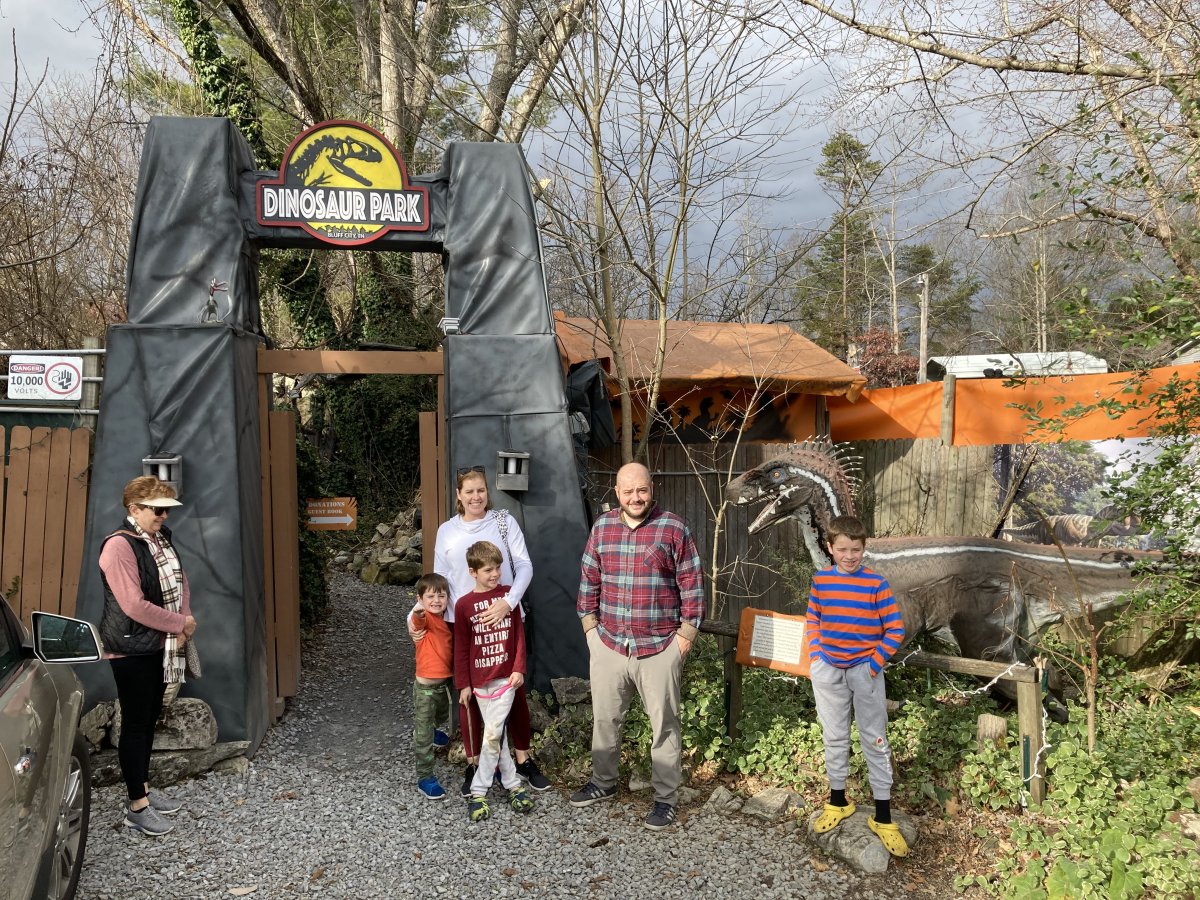 |
|
|
The Dinosaur Park is the creation of Chris Kastner, a 39-year old free-lance artist and local resident who has been obsessed with dinosaurs since he was five when his Mom gave him a dinosaur toy. The six acre property was once farmed for tobacco by Kastner's grandfather. Kastner initially built a life-size velociraptor for his own pleasure, then did some more, and it has evolved into this local treasure Park with over 50 species. Visitors asked for more dinosaurs, but Kastner didn't have the money, so he put up a donation box, money came in, and that it how the park has been funded. The release of the movie Jurassic Park in 1993 acceleratedf Kastner's dinosaur mania as well as the public in general.
That's a UtahRaptor on the right, there.
|
| |
 |
|
| A Pteranodon flies over head. The Pteranodon or "Wing Toothless" was a genus of pterosaurs which included some of the largest known flying reptiles, with wingspans over 23 feet. Technically, Pteranodon was not a dinosaur, but most people, including me, regard them as dinosaurs. |
| |
 |
|
|
Teddy better be careful; those little dinosuars may look harmless but we all know what a pack of them can do from the movie The Lost World: Jurassic Park.
|
| |
 |
|
| A family picture is disrupted by an Allosaurus emerging from the woods. |
| |
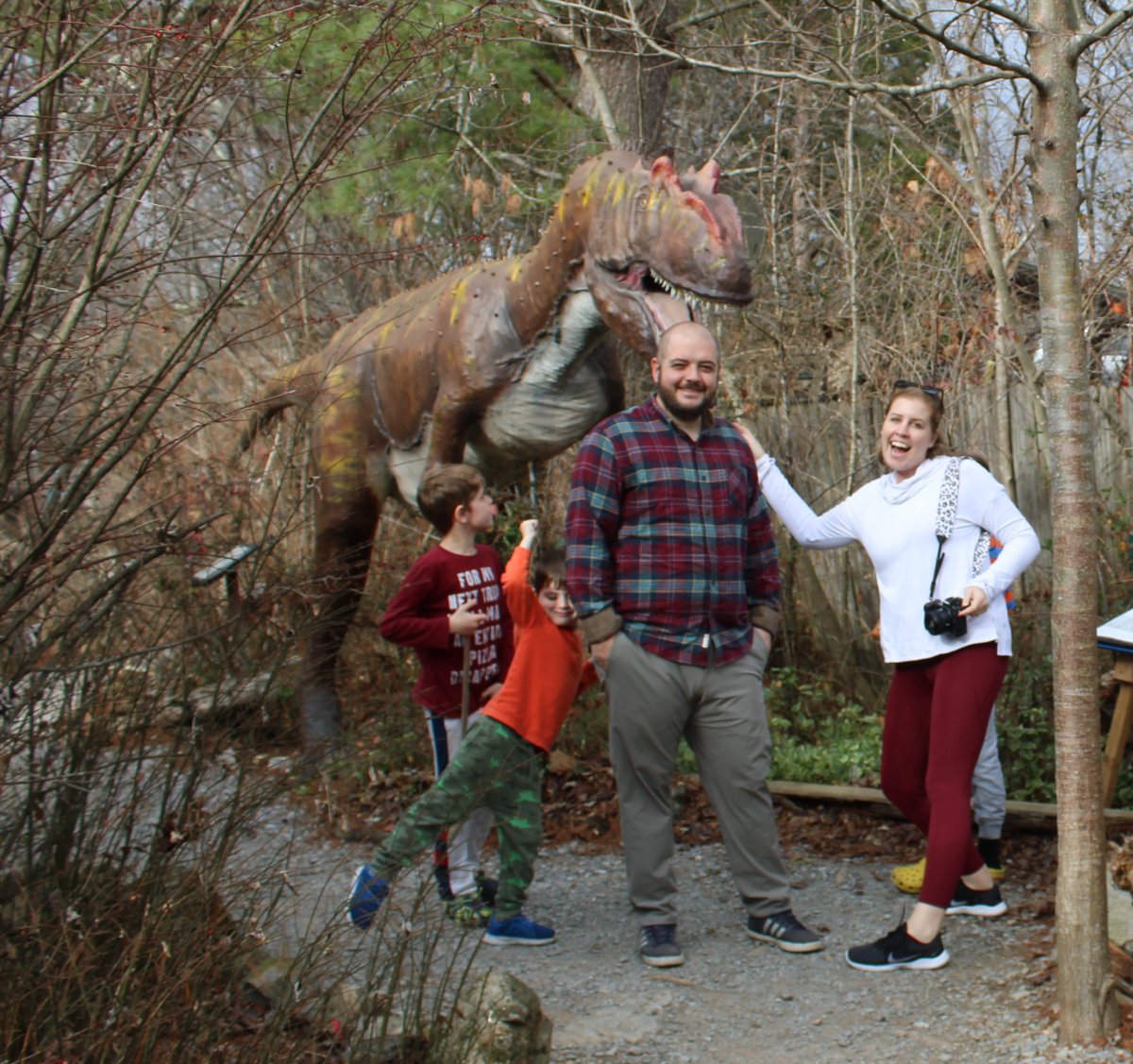 |
|
| Run, William, run! Allosaurus menas "Different Lizard". I'll say. |
| |
 |
|
| Lucy realizes the Allosaurus is fake. |
| |
 |
|
|
A fearsom Suchomimus which means "Crocodile Mimic". Well named.
|
| |
 |
|
| The family is investigated by the patrolling security dog. |
| |
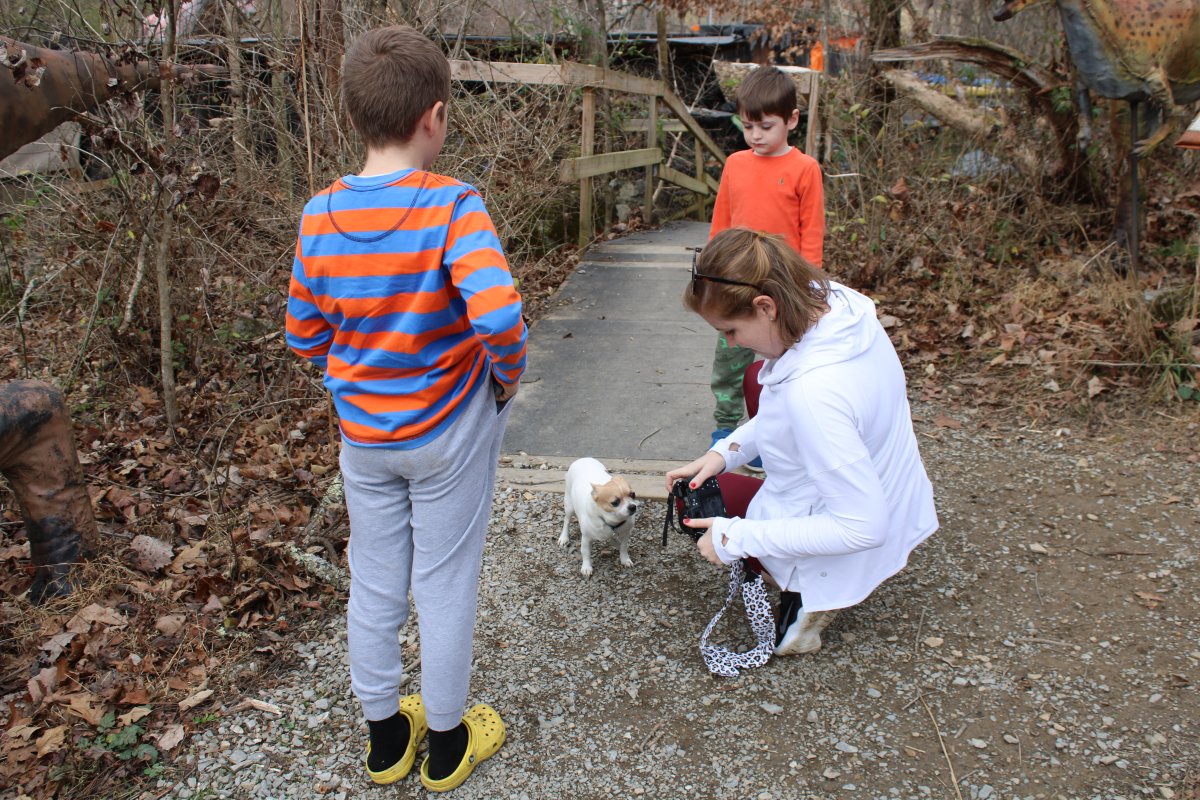 |
|
|
A colorful Stygimoloch -- Demon from the Styx. This one was a herbivore; plant eater.
|
| |
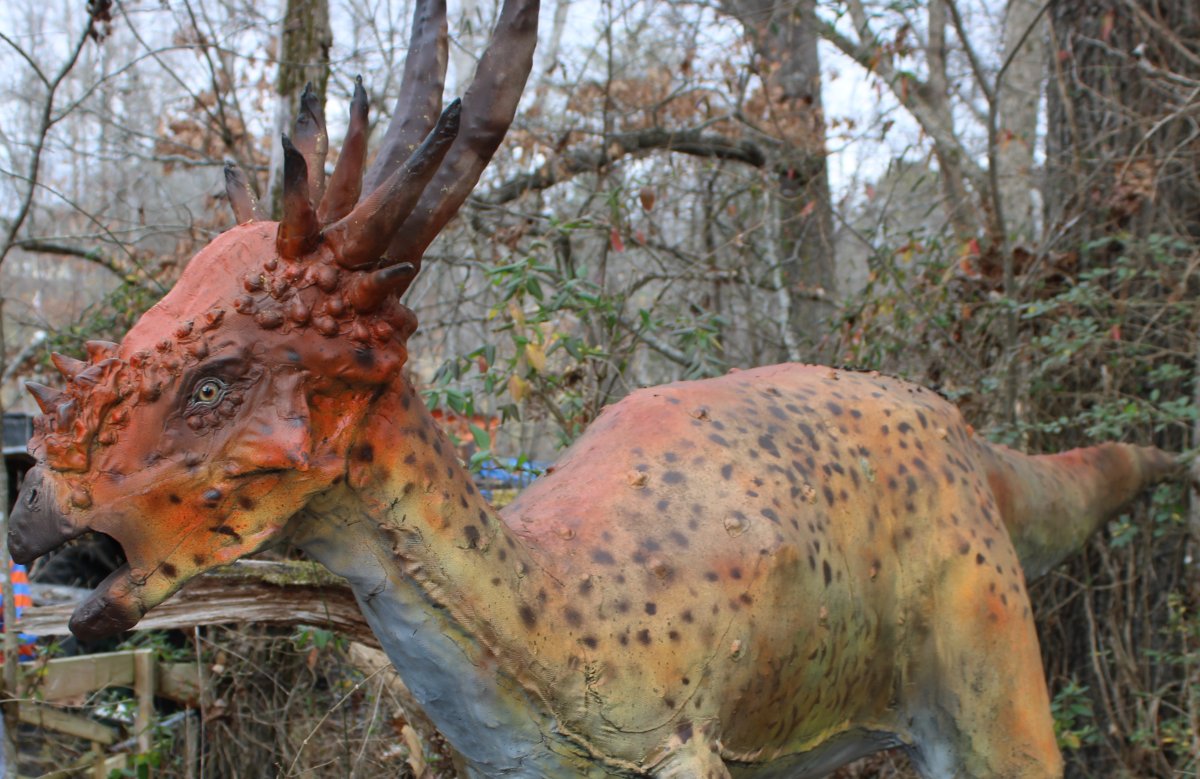 |
|
| I'm pretty sure this Carnotaurus was a meat eater. Carnotaurus means "Flesh Eating Bull". The only skeleton, well-preserved, was unearthed in 1984 in Argentina on an expedition led by Argentinian paleontologist José Bonaparte. |
| |
 |
|
| A giant T-Rex has spotted Griffin. Snack time! |
| |
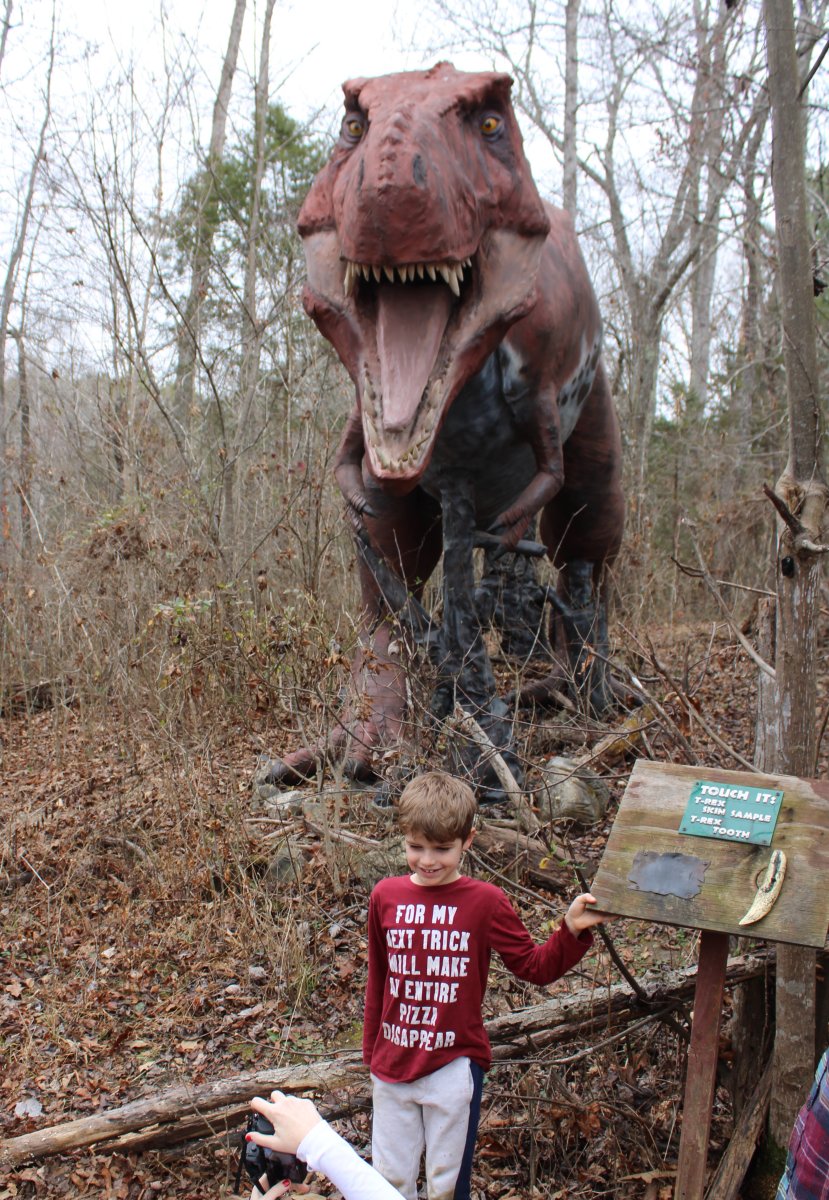 |
|
| The T-Rex was discovered by Barnum Brown in 1900. |
| |
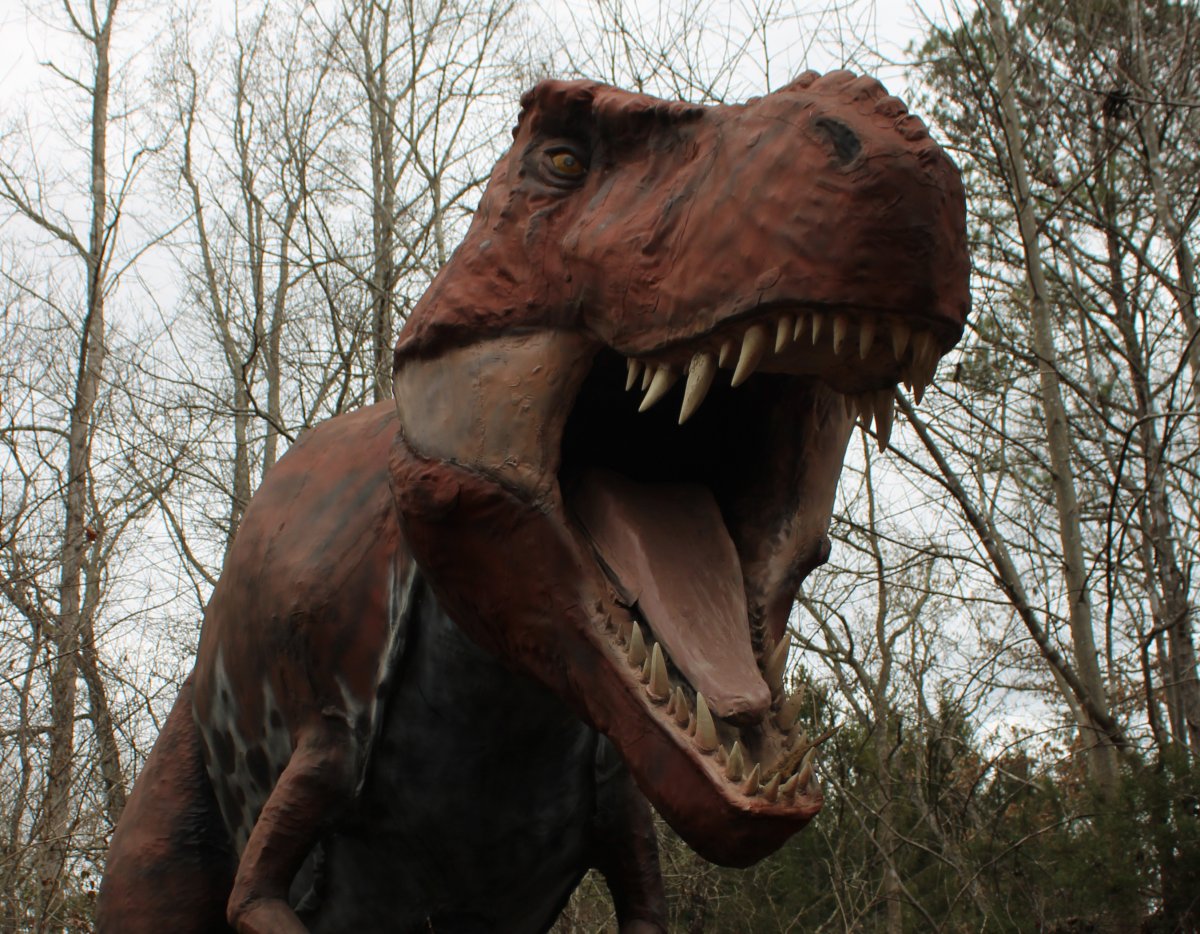 |
|
|
The Park has named this T-Rex "Stan" as it was based on the fossil of the same name. The specimen was found by amateur paleontologist Stan Sacrison, in the Hell Creek Formation near Buffalo, South Dakota, in the spring of 1987. Stan is 63% complete and is on display at the Black Hills Institute of Geological Research in Hill City, South Dakota.
|
| |
 |
|
| Not only were the dinosaurs extremely well done, but so were the plentiful placards with information on each dinosaur. |
| |
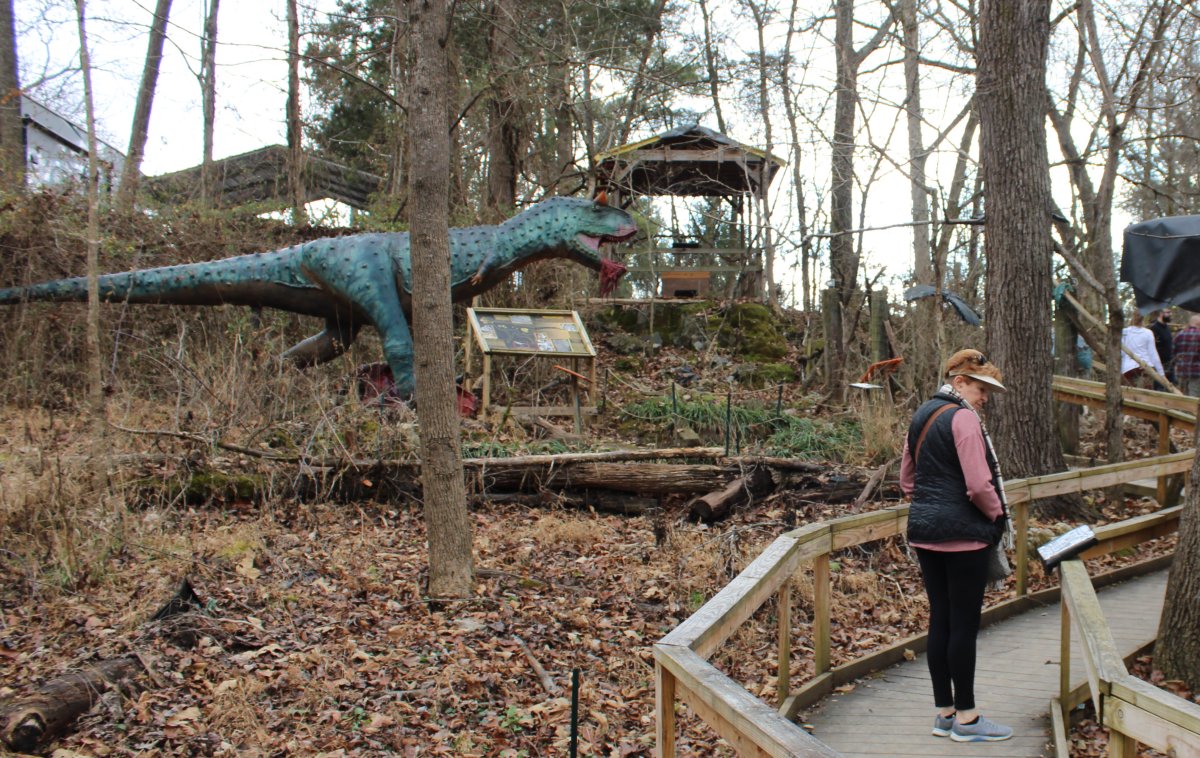 |
|
|
There was even an area for aquatic dinosaurs, which all have plenty of teeth.
|
| |
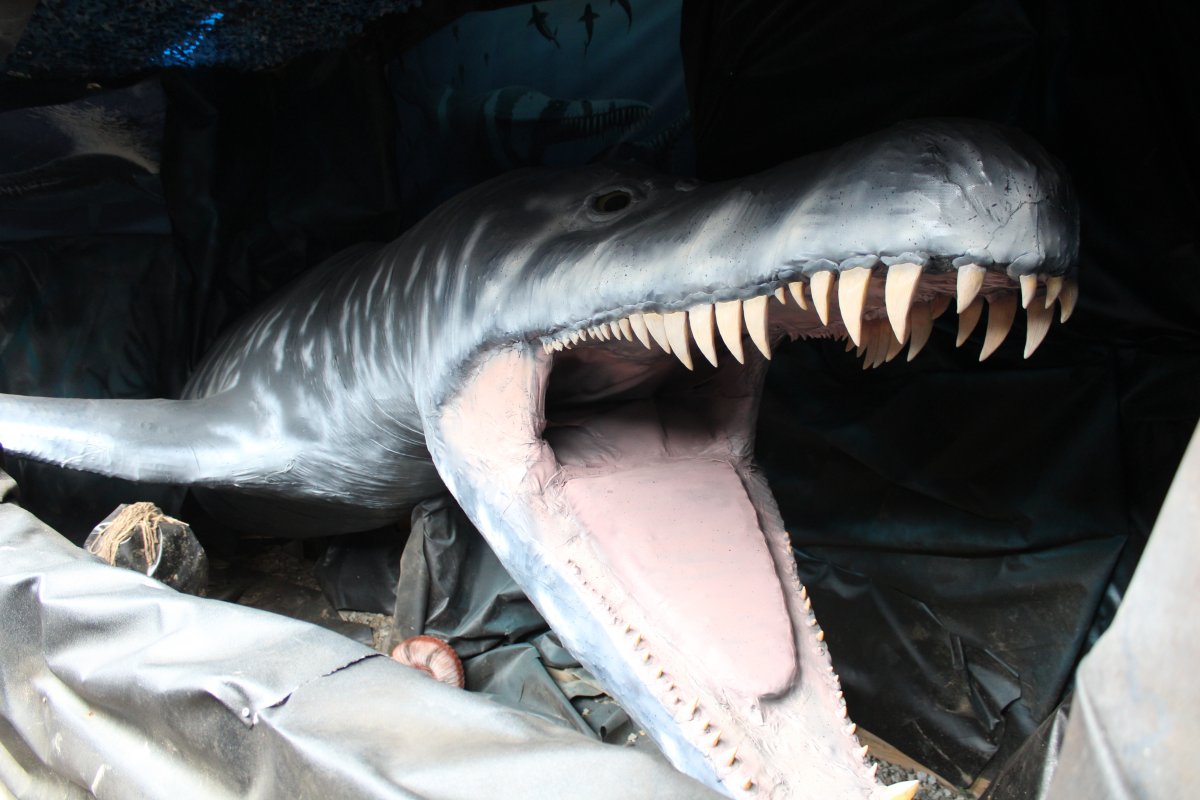 |
|
|
The giant Brontosaurus -- Thunder Lizard -- also known as Apatosaurus.
In 1879, Othniel Charles Marsh, a professor of paleontology at Yale University, announced the discovery of a large and fairly complete sauropod skeleton from Morrison Formation rocks at Como Bluff, Wyoming. He identified it as belonging to an entirely new genus and species, which he named Brontosaurus excelsus, meaning "thunder lizard". By this time, the Morrison Formation had become the center of the Bone Wars, a fossil-collecting rivalry between Marsh and another early paleontologist, Edward Drinker Cope. In 1905, the American Museum of Natural History unveiled the first-ever mounted skeleton of a sauropod, a composite specimen.
|
| |
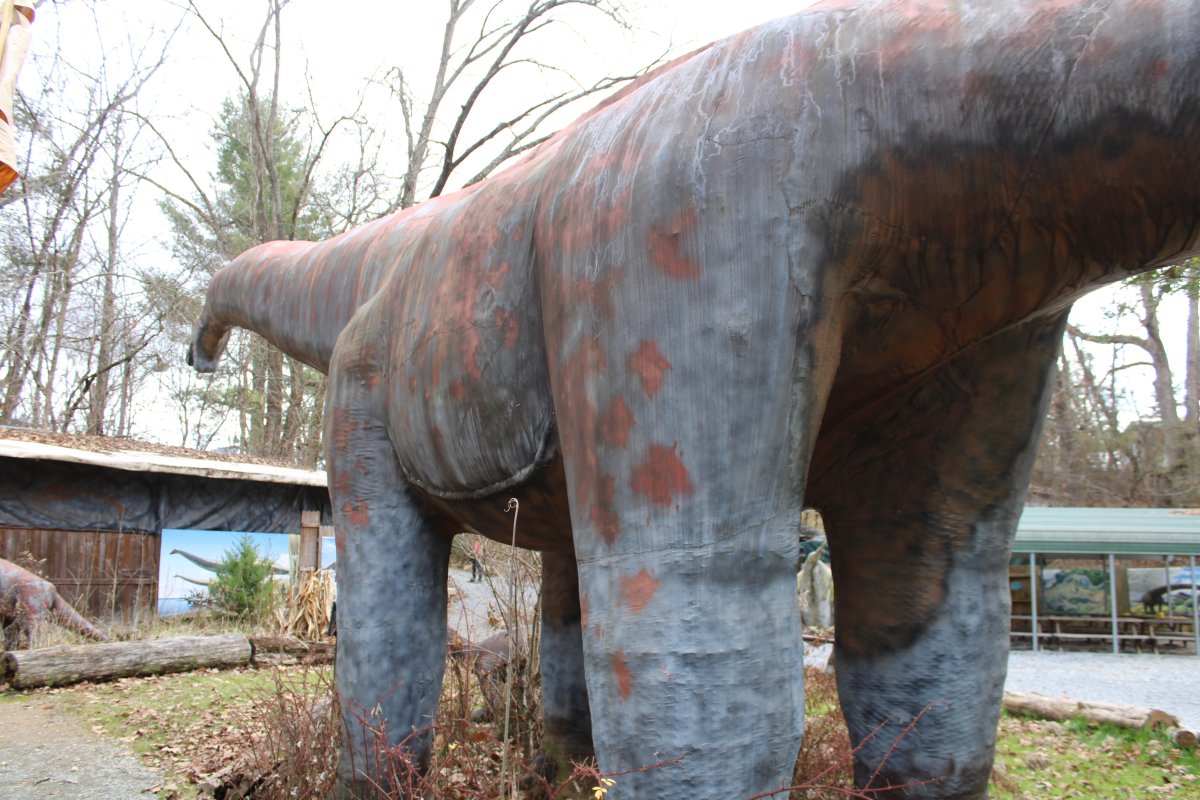 |
|
| Lynnette interacts with "Blue", the velociraptor from Jurrasic World. |
| |
 |
|
| Walking through Dinosaur Park. |
| |
 |
|
|
Whoa! Watch out for that big one!
|
| |
 |
|
|
A Tupuxuara swoops down on the boys. The fossil was discovered in 1988 in Brazil.
|
| |
 |
|
| The colorful, feathered, Deinonychus or "Terrible Claw". |
| |
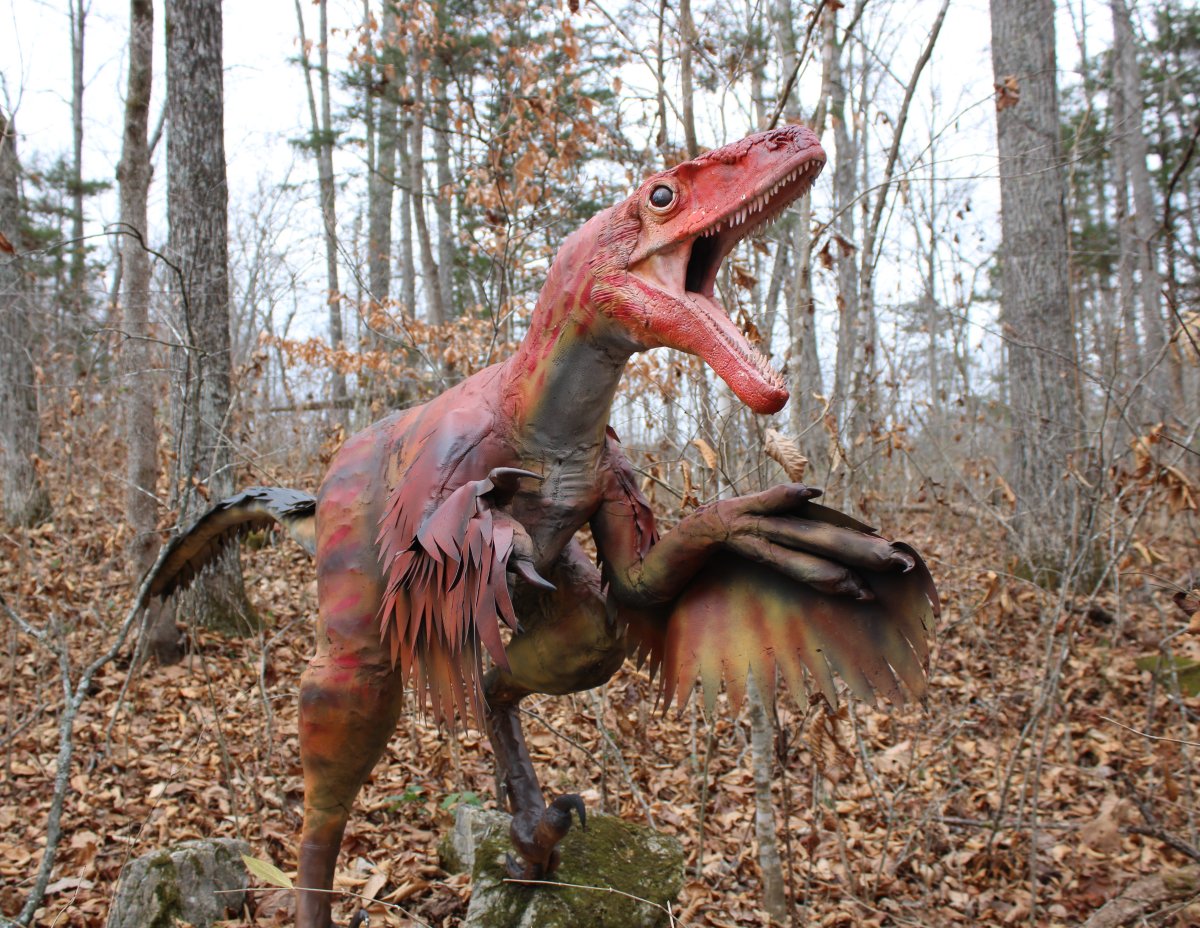 |
|
| A curious herbivore cautiously checks out the family. |
| |
 |
|
| Size does matter in the world of dinosaurs. |
| |
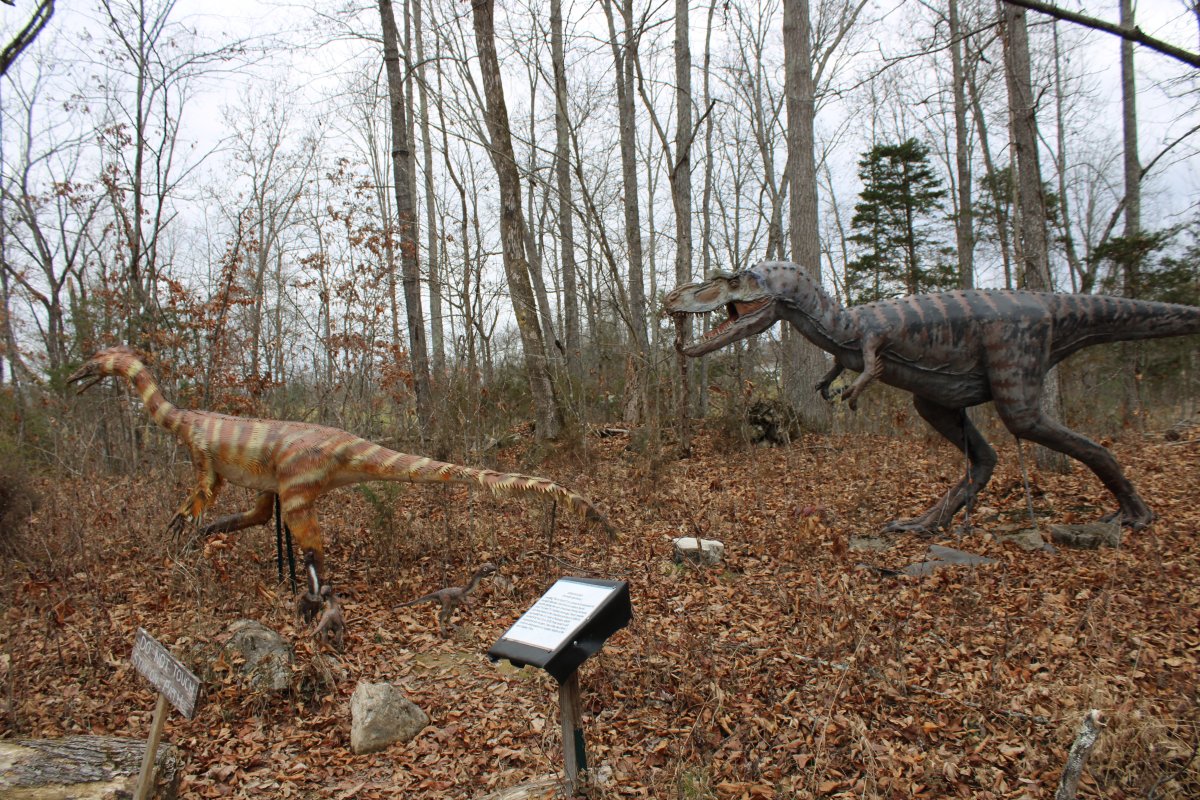 |
|
|
Check out the rack on that one!
|
| |
 |
|
| A Nothronychus, "Slothful Claw". It was discovered in 2001 near the border of New Mexico and Arizona. How do they know that a dinosaur had feathers? |
| |
 |
|
Chasmosaurus, or "Opening Lizard". This one was discovered in 1898 in Canada.
|
| |
 |
|
| Ride 'em, cowboy! |
| |
 |
|
| The family takes a break in the playground. |
| |
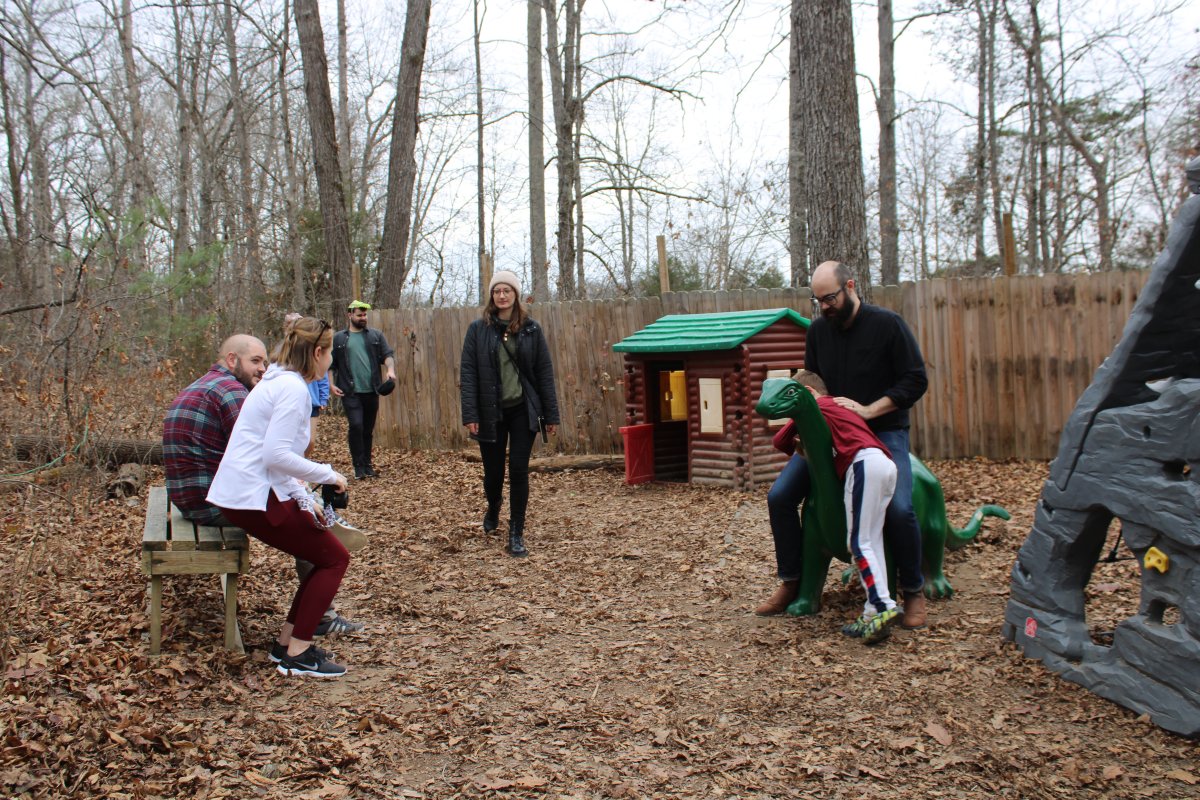 |
|
| King of the hill! |
| |
 |
|
|
Ride 'em, cowgirl!
|
| |
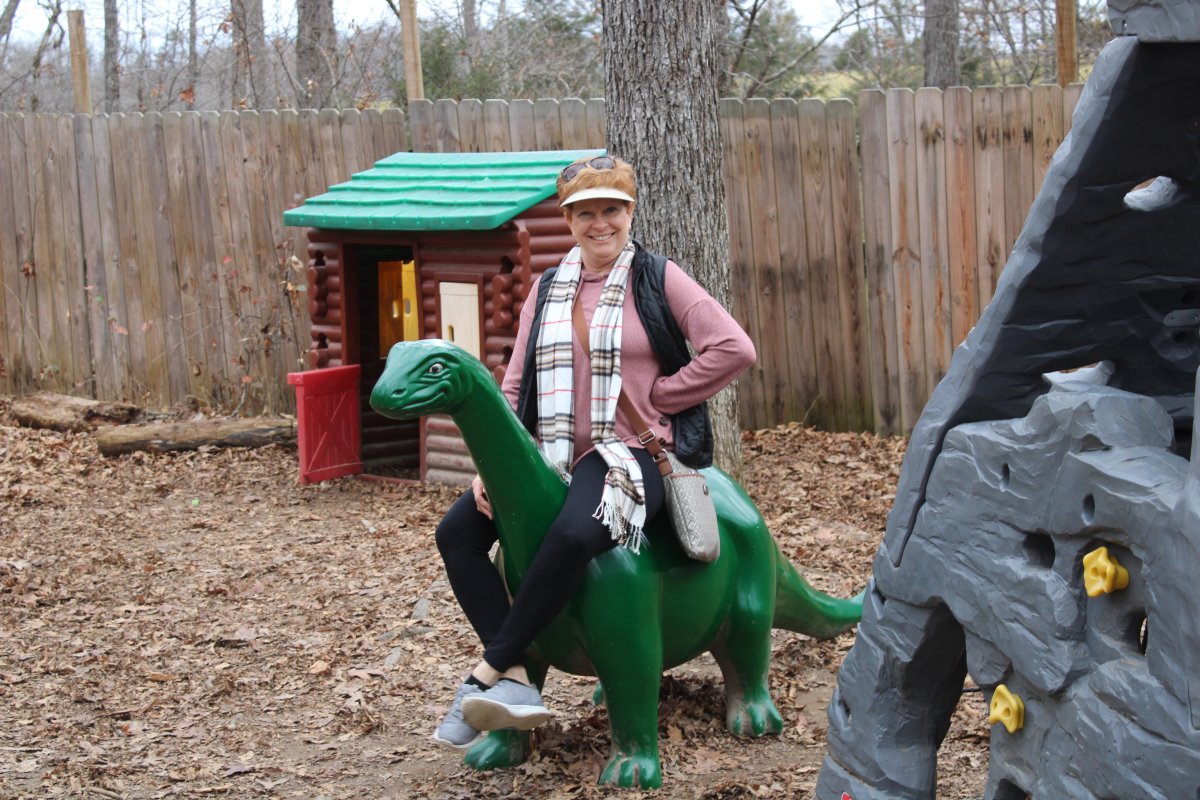 |
|
Ceratosaurus, A nearly complete skeleton of the "Horn Lizard" was discovered in 1885 in Colorado.
|
| |
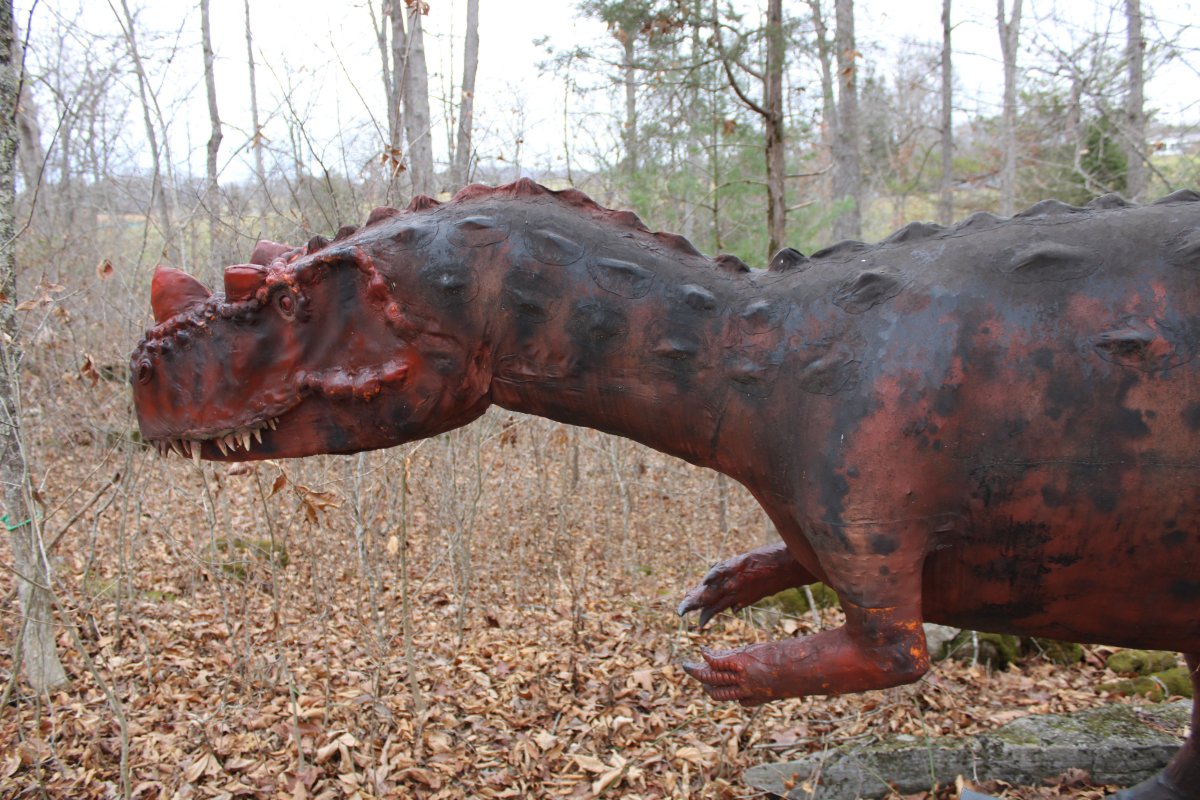 |
|
|
|
| |
 |
|
| |
| |
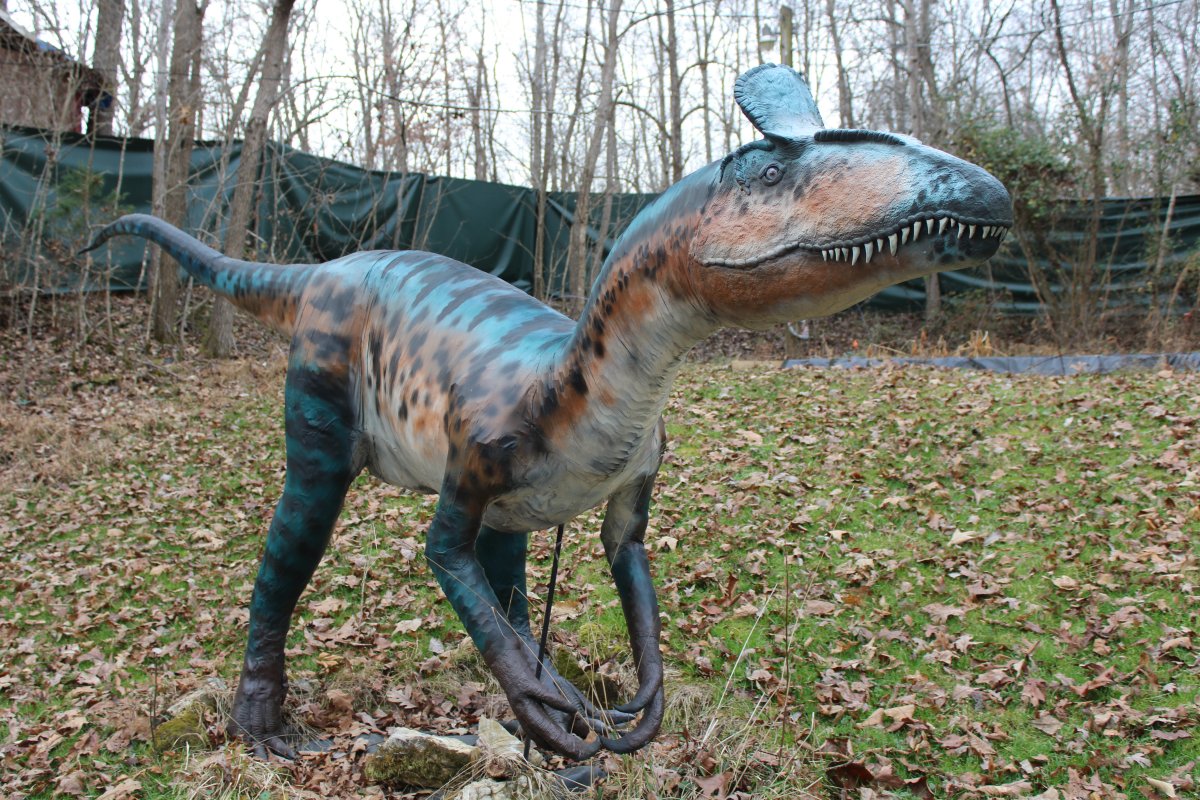 |
|
| A giant carnivore peaks out of the bushes. |
| |
 |
|
| The boys admire some paintings, unaware a giant spider overhead is eyeing them. |
| |
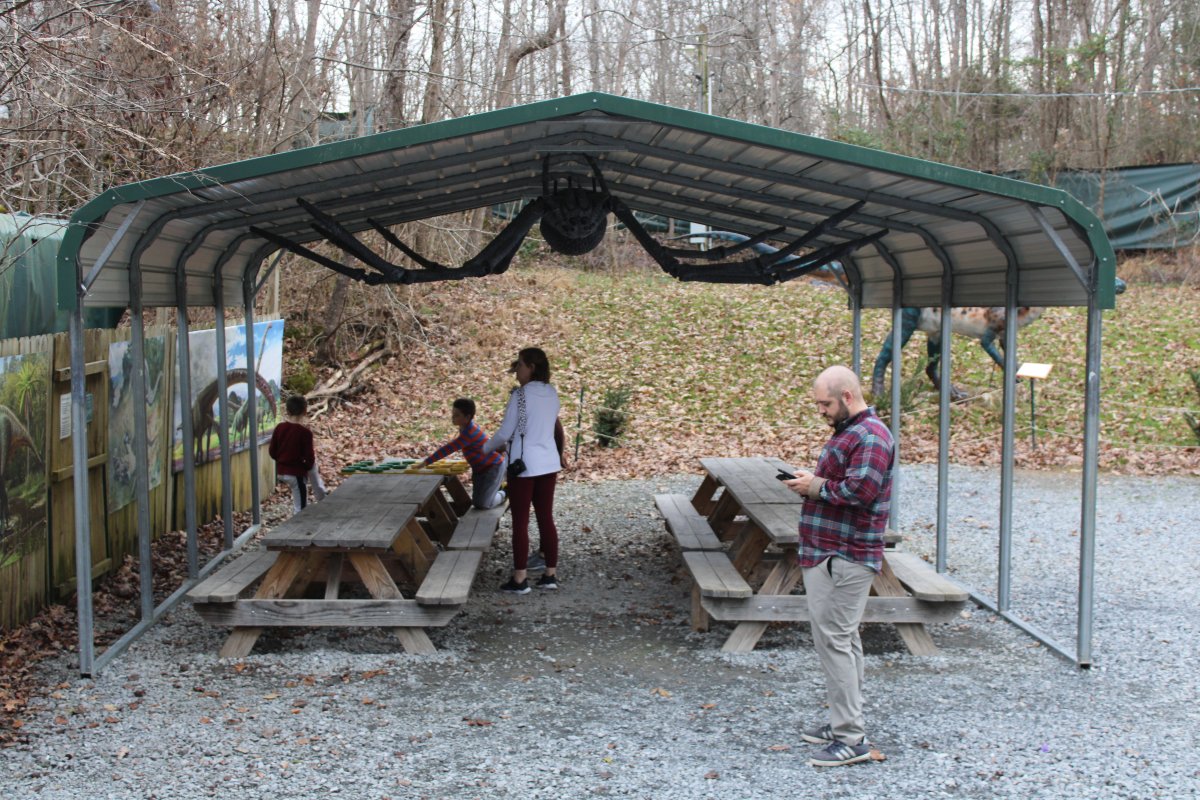 |
|
|
Looks like a maneater to me.
|
| |
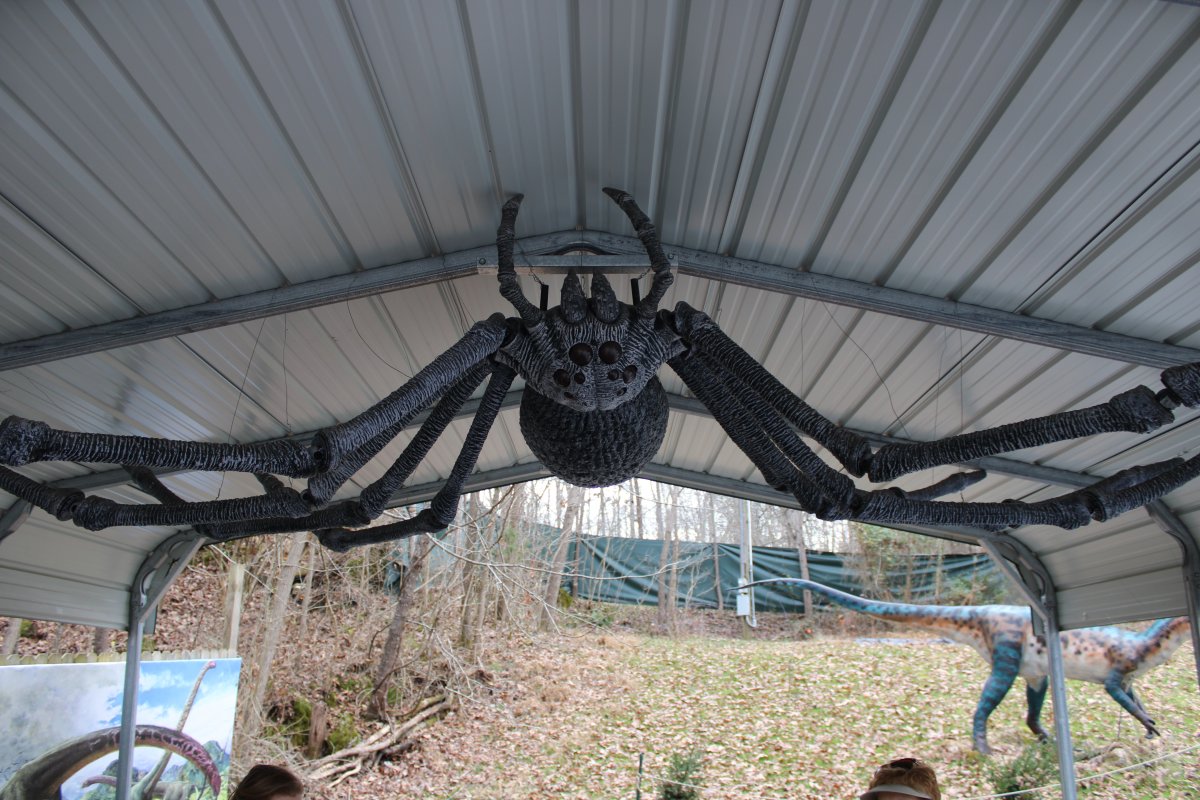 |
|
| I was interested in how the dinosaurs in the park were made. Months of research takes place before construction starts, including talking with experts. Then a silhouette of the dinosaur is made from plywood, reinforced with two by fours. Then the musculature is bulked out from the wood with a 12.5 gauge welded steel structure, bent or twisted into shape by hand. Chicken wire is placed over the steel wire frame. A heavy duty vinyl "skin" is wrapped around the frame and heat shrunk with a heat gun. This heat shrinking is the most time consuming part. All parts heads, hands and feet are made by applying layers of spray foam to the wood base, then carving them into the desired shape. Claws and teeth are made with two-part epoxy. The the dinosaur is painted using spray paint, stencils and brushes, all by hand. |
| |
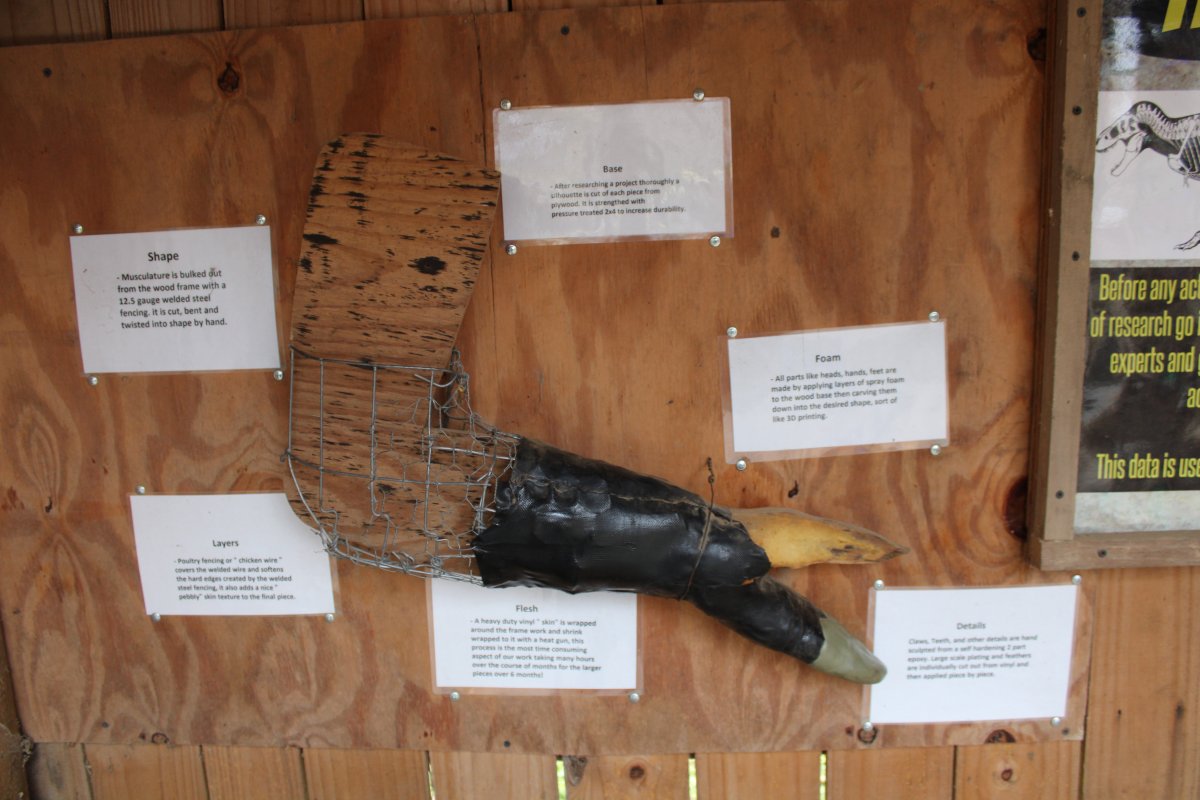 |
|
|
Friendly little guy.
|
| |
 |
|
| I think this is the dinosaur that ate "Newman" in the movie Jurrasic Park. |
| |
 |
|
|
William scored in the gift store, the first gift store run on the honor system I have ever seen.
We had a fun afternoon at the Dinosaur Park; highly recommended if you are ever in Johnson City.
|
| |
 |
|
| |
| |
| |
|
|
|
|
|
|








































